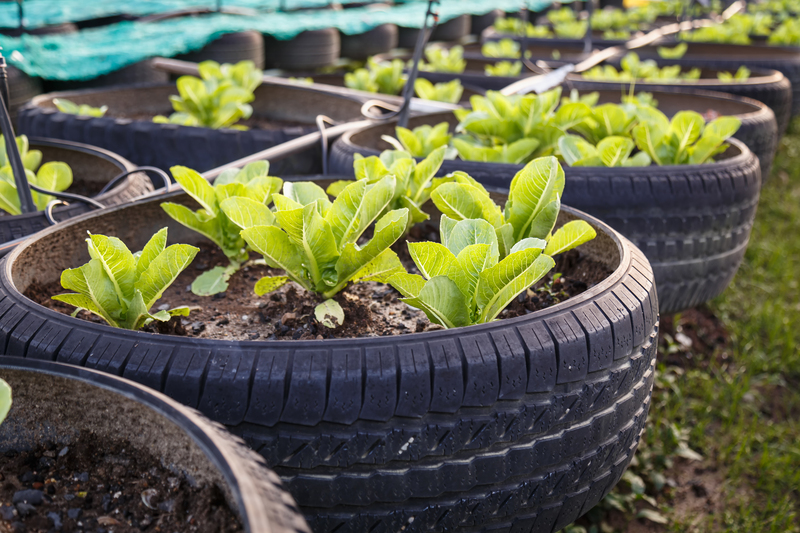Making PPE Waste Disposal Simple and Sustainable
The global pandemic has transformed the way we view personal and environmental hygiene. As a result, the widespread use of Personal Protective Equipment (PPE) such as masks, gloves, and face shields has become the new normal across many industries and the public sector. However, PPE waste disposal has now emerged as a critical environmental challenge. This article delves into comprehensive, practical, and innovative approaches to making PPE waste management both simple and sustainable.
Understanding the Challenges of PPE Waste Disposal
PPE waste is unique due to its potential to spread infection, the variability of materials, and the sheer mountain of waste generated globally. Before the pandemic, medical waste management already posed challenges, but COVID-19 amplified these issues exponentially:
- Massive Increase in Waste: Billions of PPE pieces are discarded monthly across the world.
- Material Complexity: PPE consists of various plastics, rubbers, and textiles that complicate recycling.
- Potential Biohazard: Used PPE may carry pathogens, making safe handling imperative.
- Global Distribution: PPE waste is generated everywhere, from hospitals to homes.
By understanding these challenges, we pave the way for effective, simple, and sustainable solutions.

Why Sustainable PPE Waste Management Matters
Improper disposal of PPE is not just an eyesore--it's an environmental and public health danger. When masks or gloves end up in nature, they:
- Pollute waterways, soil, and marine environments.
- Pose ingestion and entanglement risks to wildlife.
- Release toxic chemicals and microplastics as they degrade.
- Spread pathogens if contaminated.
Creating a sustainable PPE waste stream is crucial to reducing these impacts, preserving the health of communities and the planet.
How to Make PPE Waste Disposal Simple and Sustainable
A multi-layered approach is essential for effective PPE litter management and sustainability. Here's how individuals, organizations, and governments can take action.
1. Segregation and Safe Collection
Proper segregation is the first and most crucial step in making PPE waste disposal efficient. Here's what to do:
- Use Clearly Labeled Bins: Allocate designated bins for PPE in public spaces, offices, and homes. Color-code or use prominent signage for easy identification.
- Don't Mix with Regular Garbage: PPE waste should never be mixed with general waste or recyclables due to contamination risks.
- Employ Safe Collection Practices: Use gloves and wash hands after collecting used PPE. Seal the bags tightly to avoid exposure.
2. Promoting Reusable PPE Alternatives
One of the best strategies for sustainable PPE waste reduction is reusability. Promote options like:
- Cloth Masks: Whenever possible, opt for washable and reusable masks. Ensure they meet filtration standards for safety.
- Reusable Face Shields: Durable shields can be disinfected and reused, significantly decreasing waste.
- Recyclable PPE: Encourage the use of materials that can be reprocessed, such as certain types of polymers.
*Initiating procurement policies that favor reusable and recyclable PPE components significantly cuts down on single-use product dependency*.
3. Leveraging Innovative Recycling Technologies
The development of modern PPE waste recycling methods is a game-changer. Some noteworthy approaches include:
- Chemical Recycling: Advances allow some plastics and fibers in PPE to be broken down and repurposed for new products, such as street furniture or construction boards.
- Thermal Treatment: Controlled incineration with energy recovery can safely reduce PPE waste volume while generating electricity or heat.
- Mechanical Shredding and Repurposing: Some companies shred used PPE and mix it with asphalt for eco-friendly paving solutions.
- Emerging Biodegradable PPE: Researchers are developing masks and gloves made from biopolymers, which decompose faster and more safely.
*Investing in these technologies is a fundamental step towards a circular economy for PPE waste*.
4. Public Education and Awareness
Education is the backbone of responsible PPE disposal. Campaigns should focus on:
- Informing about Safe Disposal: Teach people the importance of not littering and how to safely segregate PPE.
- Encouraging Responsible Behavior: Highlight the environmental risks of improper PPE disposal.
- Sharing Innovative Disposal Options: Raise awareness about recycling bins for masks, glove drop-off points, and other available facilities.
*Empowerment through information leads to better habits and greater participation in sustainable initiatives*.
5. Implementing Effective Legislation and Policy
Policies can provide the framework needed for large-scale, sustainable PPE waste treatment:
- Mandatory Segregation: Enforce separation of PPE waste in businesses, healthcare, and public places.
- Setting Recycling Targets: Require companies and municipalities to hit specific recycling or reduction goals.
- Supporting Research: Fund innovation in PPE design, recycling, and alternatives.
- Ensuring Producer Responsibility: Encourage PPE manufacturers to take back and help recycle their products.
Policy-driven action is essential for scalable, systemic change in PPE waste disposal.
Case Study: Best Practices for Sustainable PPE Waste Disposal
1. Healthcare Sector Initiatives
Hospitals and clinics generate vast amounts of PPE waste but are also leading innovators in safe and sustainable PPE disposal:
- Dedicated Disposal Bins: Hospitals use clearly marked PPE-only bins placed at points of care for easy segregation.
- On-Site Disinfection: Facilities like UV or chemical treatment ensure PPE waste is decontaminated before being sent for recycling or disposal.
- Staff Training: Regular workshops keep healthcare staff updated on the latest PPE waste protocols.
2. Community and Municipal Approaches
Cities and towns are stepping up to tackle PPE litter and pollution:
- Street Bin Installations: Metro areas are investing in PPE-specific bins, especially in high-foot-traffic zones.
- Public Awareness Drives: Flyer campaigns, social media outreach, and local news features spread the word on proper disposal habits.
- Pilot Recycling Programs: Some cities partner with recycling companies to establish collection and reprocessing points for used PPE.
3. Business and Corporate Responsibility
Corporate stakeholders can reduce their environmental footprint by:
- Encouraging employees to use reusable PPE where feasible.
- Establishing comprehensive waste segregation and collection systems at all company sites.
- Partnering with certified PPE recyclers for safe disposal or processing.
The Role of Technology in Smart PPE Waste Solutions
1. Smart Bin Infrastructure
IoT-enabled smart bins can distinguish PPE from other waste, alert maintenance staff when full, and track volumes--increasing efficiency and compliance.
2. Traceable Waste Management
RFID tags and blockchain systems help track the journey of PPE waste from collection to final disposal, ensuring transparency and safety.
3. Mobile Apps for Citizen Engagement
Mobile applications inform the public of nearest disposal points, track their own PPE waste habits, and even reward responsible disposal practices with green points or incentives.
Simple Steps Everyone Can Follow for Better PPE Waste Disposal
- Always carry a bag: Keep a small pouch for your used masks or gloves until you find a designated bin.
- Cut ear loops: Before throwing away masks, cut the ear loops to minimize risks to wildlife.
- Dispose responsibly: Never flush PPE down toilets or discard them into open environments.
- Educate others: Share tips on social media, at work, or with your community.
- Opt for reusables: Use washable masks and visors whenever it is safe to do so.

The Future of PPE Waste Disposal: Toward a Circular Economy
The journey toward sustainable and simple PPE waste management is ongoing, but it is essential for environmental health and resilience against future crises. Key directions for the future include:
- Eco-design: Developing PPE from compostable or easily recyclable materials.
- Standardizing waste streams: International agreements on PPE waste categorization and recycling protocols.
- Scaling up recycling infrastructure: Expanding accessible recycling and processing facilities worldwide.
- Incentives and disincentives: Tax breaks for sustainable practices, and penalties for environmental violations.
Conclusion: Building a Greener, Safer World--One PPE at a Time
Making PPE waste disposal simple and sustainable is not just a moral obligation--it's an urgent necessity. From innovative recycling technologies and smart policies to everyday habits, every stakeholder has a role to play. By embracing reusable PPE, investing in green technologies, committing to public education, and integrating smart waste systems, we can minimize the crisis of PPE pollution today and build resilient, eco-friendly systems for tomorrow.
Businesses, governments, and individuals alike must prioritize sustainable PPE management. Together, we can transform a pressing environmental challenge into an opportunity for innovation, safety, and ecological harmony. The future depends on the actions we take now.
If you want to be part of the solution, start with your next mask: dispose responsibly, recycle when possible, and share your knowledge with others. That is how we will make PPE waste disposal truly simple and sustainable.